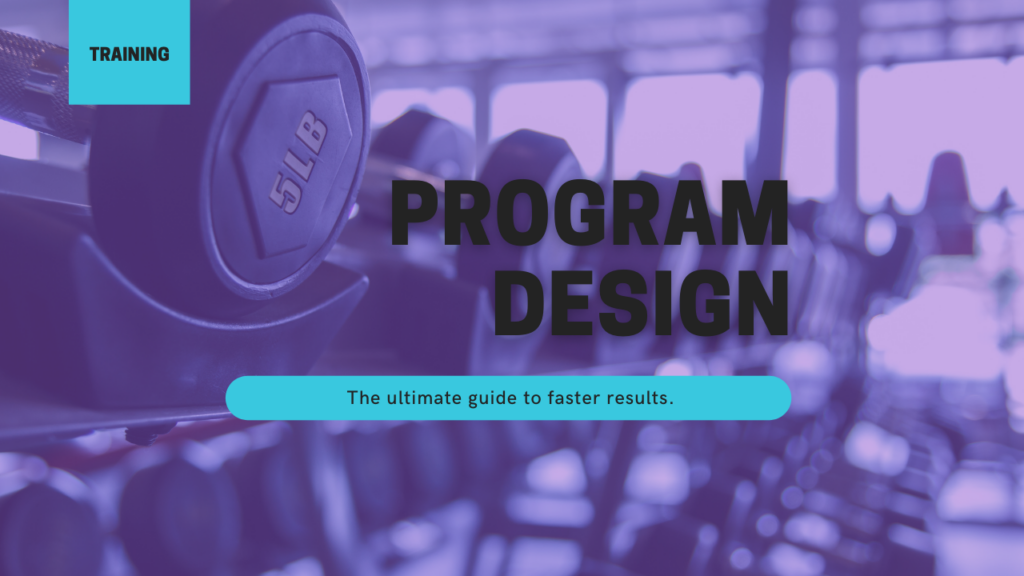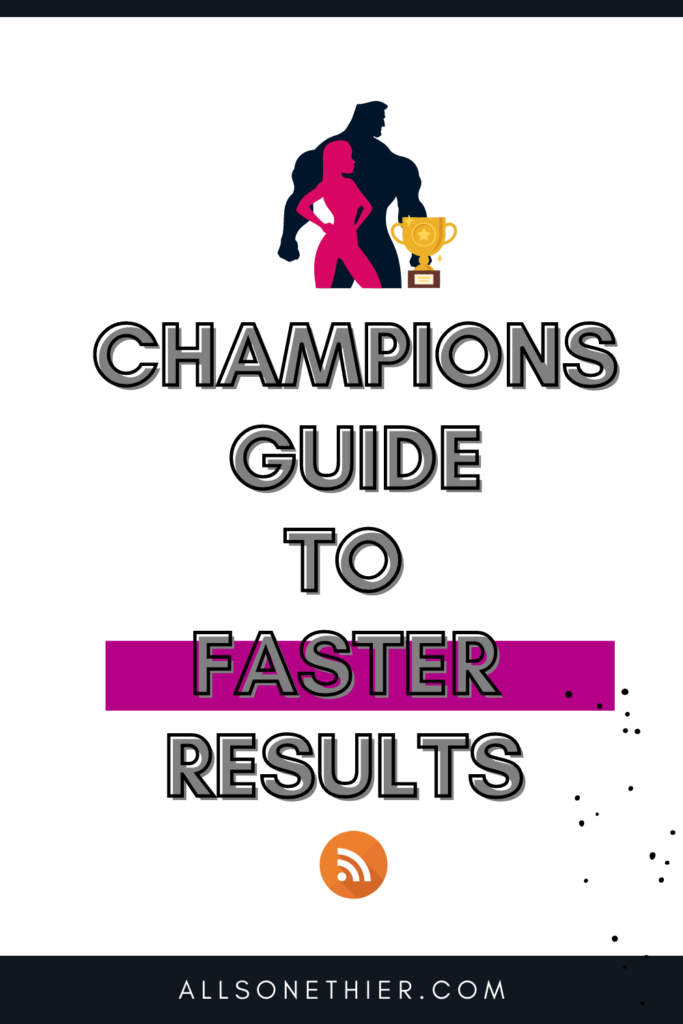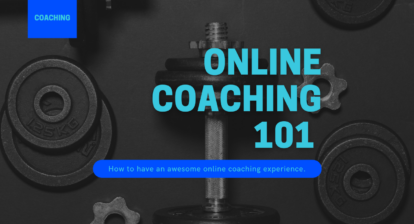Ultimate Guide to Training Success

It is often said, that training program design is one part science and one part art. The science validates certain training methods and methodologies work. The art is in the interpretation of the science, and its application to you – the client.
PROGRAM DESIGN
The program design includes all the training variables, you will need to achieve your fitness goal, organized in a clear, structured, and simplified manner. It includes, but is not limited to, the exercises, reps, sets, tempo, lifting variations, weight used, frequency of application, and length of the training session.
Even with the ‘perfect’ training program scientifically researched, and structured, application of that program in the context of life never happens that way it does in a controlled lab.
YOU, after all, are the most important variable.
THE most effective training program, should fit into your lifestyle, put you on the path toward your goals, under a realistic timeline.
BENEFITS OF EXERCISE
The World Health Organization (WHO) recommends 150-300 mins of physical activity per week.
They also recommend muscle-strengthening activities, working for most major muscle groups at least 2 days per week, if not more.
Regular and adequate physical activity has been shown to:
-
- increase strength and endurance
- reduce anxiety, depression, stress
- improve cognitive function
- prevent or reduce health-related diseases
- maintain or improve bone density
RANDOM WORKOUTS VS FOLLOWING A PROGRAM
Workouts, are a part of a training program, however, a quality training program, is not a collection of workouts.
Regular, exercise, or workouts, can help inspire and motivate, expose the body to new movement patterns, learn a new style of training, and keep training fun and interesting. Random workouts can be fun for a while, as everything is always fresh and exciting, however, if you are looking for solid results, this might not be the best approach.
1 | Random workouts lead to random results.
If you have specific goals, in mind, such as fat loss, or muscle gain, your program should reflect those goals.
It saves you time, from having to trial and error your way to success, or ask questions on a Facebook group board, only to get 10-50 different answers, that leave you more confused about how to get to your goals faster.
2 | Workouts can be hard to track.
If you are constantly changing all the variables of a program, progress becomes hard to track. The exercises, reps, set, and quality of your workout — the training variables, are changing, every single time. ” What gets measured get managed“, and if you are not tracking, you are guessing. Trial and error is a sound scientific method, however, this is a long road, and often it leads to frustration.
3 | It keeps you stuck in a beginner phase.
Random, “muscle confusion” workouts, are designed, for you to stay at a certain level of fitness. Since you are often in a learning phase, you never get to a place of movement mastery. Programs, are progressive in nature, to help you learn to move better, more mindfully, develop that mind-muscle connection, and add tools to your training toolbox.
An individually designed training program, puts you on the right path towards your goals.
CUSTOMIZED VS INDIVIDUALIZED
Individualized programs, all variables, are personalized to you by the coach.
Customized programs, you define, how things will be structured, and ultimately coach yourself.
My coaching style is a bit of both. We work together as a team, and I use a blend of both customized, and individualized, to help structure a program, that is right for you.
When it comes to program design, there are a number of variables to consider.
Let’s take a look at what goes into designing a program for you.
1 | PREVIOUS TRAINING HISTORY
Your previous training history, tells me a lot about who you are as a trainee. This information is valuable. It tells me what worked well, and what did not work well.
Training that was effective and fun, coaches you have worked with, and even workouts, that you loved, move you forward faster, to what works effectively and efficiently for you.
2 | CURRENT TRAINING
Your current training, tell me where you are at, right now. It is the single BIGGEST factor, used to consider what is possible in 3-6 months. It also lets me know how much volume (reps, sets, frequency) to assign, and how hard, you can be pushed, to get to your goals — faster.
3 | TRAINING GOALS
Fat loss is where most will start their fitness journey, and then move into building muscle, with a focus on foundational movement patterns. Clients with a more experienced, training background, might be able to move right into muscle building.
In both cases, nutrition, program design, and cardio play a role, in how quickly you will get to your goal. We decide together, where we should be primarily focussed on right now, and then go from there.
4 | TIMELINE
TIME is a limiting factor for most.
We know the process, takes longer than we would like, and the time investment is always more than expected.
The general rule for fat loss is 1lbs, on average per week, and 0.5lbs of muscle gained per month for most trainees. This means, if you have an event that you would like to lose 10bs of bodyweight, you have to consider the investment might be 10 weeks. Muscle gain for women is much slower and more work, and even at 1 lb per month of muscle gain – a 5 lbs gain, would take 5 months.
Due to life interruptions, I recommend to double your timelines, and lower the intensity, per week. Changing a body, takes, time, and is often referred to as a marathon, not a sprint.
5 | CURRENT HEALTH
Your overall health will play a role in how much you can push the body.
If you have chronic health issues, an autoimmune disease, or hormonal imbalances, losing body fat can be a challenge. If you are only getting 3-4 hours of sleep per night, pushing you in a full-on muscle-building program, might not be the best goal for you right now. If you just returned to training from a layoff or having a baby, you might have to start a more basic level, to ensure, proper building of a solid foundation, and proper recovery.
Certain lifestyle habits are key healthy foundations for successful fat loss and muscle building. These habits can be worked on concurrently while losing fat, and ultimately determine if you will maintain your results, once you’ve achieved the goal.
6 | INJURIES
Injuries are limitations or restrictions. In most cases, we can work around any current injury or previous injury, in order to keep you safe, while moving toward your fitness goal. Your previous injuries or current pains help when selecting exercises, based on your current level of fitness, and experience. This information, lets me know what exercises, I can assign, and avoid.
A client, who previously broke, her leg, although she is healed, any kind of jumping she still feels pain in that leg. If you had previous a shoulder injury (a common one), certain pressing or shoulder movements can cause pain, or re-injury the area. In any event, we might need a few weeks, to focus on strengthening the area, before building muscle.
Pain is a sign of things to watch out for, and injuries, take longer to heal from as we age, so proper programming is essential to strengthening those areas, that might need more work, and prevent you from getting injured.
7 | LIMITATIONS IN MOVEMENT
There are times, when certain movements, just don’t fit, with certain body structures.
Deep squats, deadlifts, or certain overhead press movements. It could be a technique issue, or it could be your body was just not designed for certain movements. I design based on what you CAN DO, and work around these limitations, and adjust when necessary.
8 | EQUIPMENT
Equipment can help keep things, interesting, which is connected to motivation and inspiration, and of course, moving the body in a different way, if needed. The tools I have available determines, how I structure your programming.
If you are looking to gain muscle, and you have access to 0 equipment, this is going to be a limitation. I can always make recommendations and do have minimums, as it is possible to get fit, in a variety of ways, but when you are looking to do something specific, ie fat loss, and/or muscle gain — it is best to have those tools that will bring results you want with minimal resistance.
If you need a hammer, and only have a screwdriver, it could work, but it will be harder to get the job done right. Fat loss and muscle gain are hard enough, so we use the tools that are the most efficient, for that goal.
9 | LENGTH AND FREQUENCY OF TRAINING SESSION
My general rule to see results on a week, to week, or month to month basis is at least 3 hours per week of either training or cardio, or blend of both.
Any less, and the progress will be too slow, and that can affect motivation.
If you train 4-5x per week, of an hour or more, of course, you can get results, faster than 3x per week. It is a question, of what is your time commitment here, not necessarily how quickly you can get to the goal
We structure your workouts/programming to maximize what you can realistically give, in the context of your life, not what you WISH you can give.
10 | GYM OR HOME WORKOUTS
At home or at the gym, workouts can be done from anywhere. Some know how to push themselves, so the environment, matters very little, and others prefer the tranquility, convenience of training at home.
Home workouts require creativity, a small space, and certain equipment essentials. There can be limitations, and often distractions, however, it can be done with the right program and mindset. The gym can have a different energy, clientele, mindset, and variety of equipment.
Where you will be flourish and progress is the best environment, for you.
11 | MOTIVATION
Knowing how to do something, and actually doing it, are two very different things.
Even with the most perfectly designed program, if you cannot get started, this will ultimately hold you back from achieving your goal.
Lack of organization, restrictions, distractions, scheduling issues, or lifestyle habits, might need to be addressed, in order to establish habits, to help you keep going with your fitness goals. Once the excitement of starting something new, wears off, you will have to tap into your big why – why this goal is important to you. We all have tough days, and those days, are when you will need to dig deep when the internal drive is low.
FINAL THOUGHTS
A goal without a plan is just a wish.
Random workouts can work, however, it may take you longer to get to where you want to be, even if trial and error is a valid scientific method. Tracking and accountability are key, to know if your plan you are on ultimately — works.
Progression, from month to month, and year to year, should fall within that fitness goal. When in doubt, refer out to help clarify goals, set a realistic timeline, and follow a balanced, well-designed structured training program, to put your on the path to your fitness goals–faster.



 START HER FIT KIT
START HER FIT KIT 


